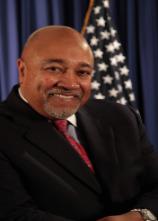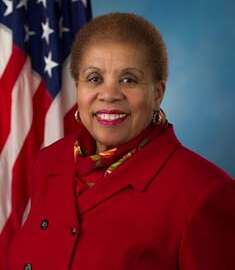
SSA: Caring for workforce that cares for the public
Reggie Wells, Chief Human Capital Officer of the Social Security Administration, discussed the diversity of the agency's workforce and how managers cultivated it.
Common wisdom has it that the Social Security Administration’s workforce is aging right alongside its customers, but that doesn’t accurately reflect the diversity that exists at SSA.
“Because of our focus on the workforce, because that is our most valuable asset as an organization … we make it a point to have a workforce that mirrors the public, and in order to make sure that we do that, it requires paying attention to who we hire, the approaches we take to hiring, and where we feel we’re going to have challenges in hiring,” Reggie Wells, chief human capital officer of the SSA, told the Federal Drive with Tom Temin.
Wells said that diversity extends to all aspects of the SSA. He said that 65 percent of the agency’s workforce is still young enough to be moving up the ladder, with members of Gen X making up 45 percent and millennials another 20 percent. The other 35 percent is made up of baby boomers and a very small traditionalist group.
“They’re small but mighty; they, as you might imagine, hold the most institutional memory, so we do treasure them as a group, but they’re moving off into a much deserved retirement … and the baby boomers are starting to make the same move,” Wells said.
The average age of SSA hires is mid-30s, according to Wells, so most employees are already well-seasoned workers by the time they reach SSA, including a number of veterans, who comprise 15 percent of the SSA workforce. He said most people come to the agency and become committed to mission, staying for the duration of their careers.
Wells said that diversity extends beyond just age; SSA’s workforce is comparable to the civilian labor force numbers:
- 10 percent present with disabilities
- 2 percent targeted disabilities
- 53 percent represent as belonging to a minority group
- 30 percent African-American
- 15 percent Hispanic
- 6 percent Asian
- 1 percent Pacific Islander
- 1 percent American Indian/Alaskan Native
- 100 dialects and languages spoken
“We’re unique in one sense: we’re sort of the mirror image of the defense side of government, in that two thirds of our workforce is female, which really does bode well in terms of service ethic and service commitment,” Wells said.
This diverse workforce manages to complete a number of jobs outside of the daily operations of the SSA, the functions the public is most familiar with. The SSA also includes actuaries who project population, an international office that handles foreign workers and agreements with embassies, and an HR division.
“We have the full range of HR professionals here, as we see it, caring for the workforce that cares for the public,” Wells said.
This devotion to workforce shows in the morale of the employees. According to Wells, SSA has consistently been ranked sixth out of 19 large agencies on the Partnership for Public Service Best Places to Work agency rankings.
“We’re pleased that we’ve been in the top 10 places to work. We’ve been hovering at [sixth place] for about six surveys now,” Wells said. “We’d love to get higher, but of course it’s a function of how your employees perceive their work experience. So we keep working hard to enhance their perceptions of it, but I think we’re doing pretty well at number six.”
He said that Commissioner Carolyn Colvin has made enhancing workforce engagement one of her priorities; every a component of the agency has initiatives to improve employee engagement.
Copyright © 2025 Federal News Network. All rights reserved. This website is not intended for users located within the European Economic Area.
Daisy Thornton is Federal News Network’s digital managing editor. In addition to her editing responsibilities, she covers federal management, workforce and technology issues. She is also the commentary editor; email her your letters to the editor and pitches for contributed bylines.
Follow @dthorntonWFED





